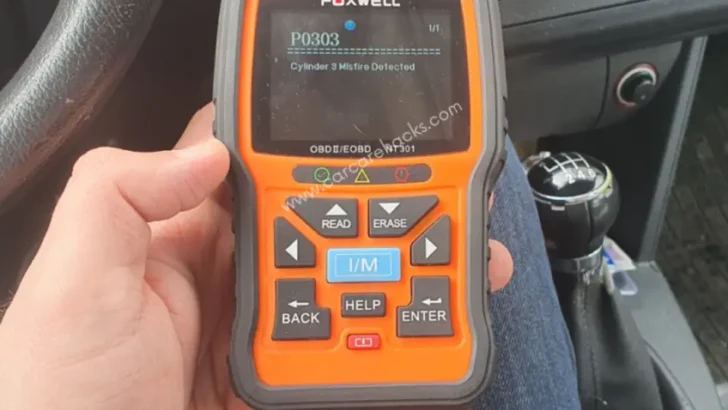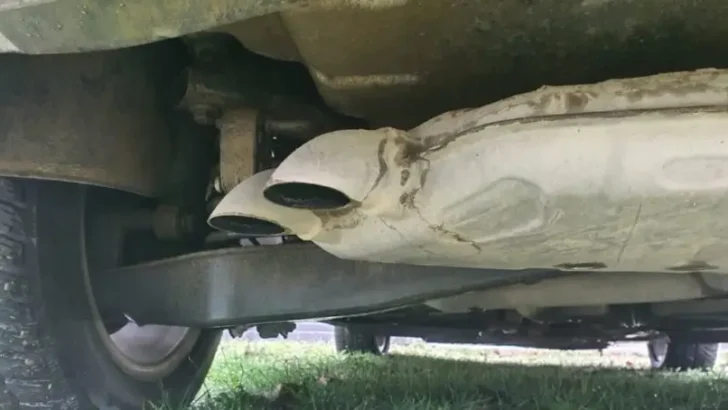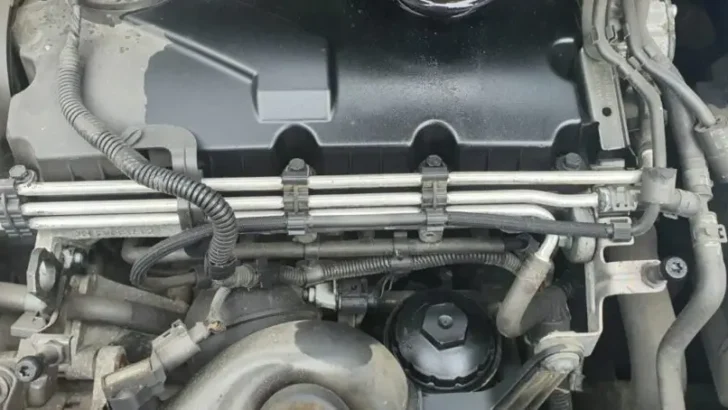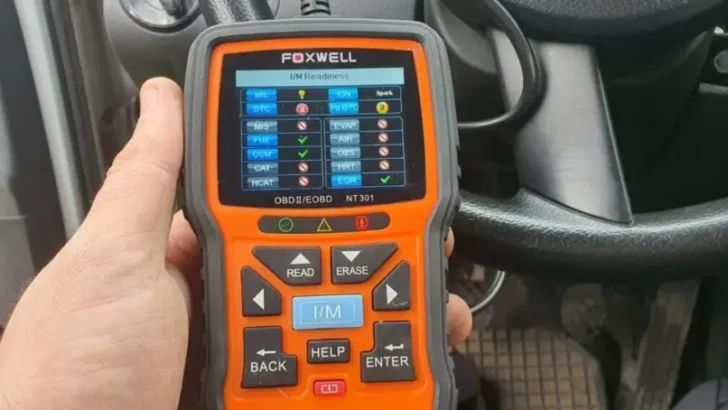If you’ve ever experienced a rough ride in your car, chances are that pesky check engine light is staring back at you, and the P0303 code – Cylinder 3 Misfire might be to blame. It’s one of those codes that can send shivers down any driver’s spine. Understanding what this code means and how to tackle it can make all the difference.
Key Takeaway
The P0303 code indicates a misfire specifically in cylinder number three. This issue can lead to poor engine performance and decreased fuel efficiency.
Understanding the causes behind this code is essential for effective repairs. Ignition system problems, fuel delivery issues, or even mechanical failures may be at play.
Symptoms can range from rough idling to noticeable vibrations while driving. Recognizing these signs early on helps prevent further damage.
Diagnosing the problem accurately often requires specialized tools and expertise. Many car owners may opt for professional help when tackling this code.
Fixing a P0303 misfire typically involves addressing the root cause directly, whether that means replacing spark plugs or fixing vacuum leaks. Costs can vary depending on severity and required parts.
What does the P0303 – Cylinder 3 Misfire mean?

The P0303 code refers to a specific issue in your vehicle’s engine. It indicates that there’s a misfire occurring specifically in cylinder number three. Misfires can disrupt the normal combustion process, leading to performance issues.
When the Engine Control Module (ECM) detects this problem, it triggers the check engine light on your dashboard. This warning signals that something isn’t functioning correctly within your engine.
A misfire may affect fuel efficiency and power output. If left unaddressed, it could potentially lead to more severe damage over time.
Understanding this code is essential for maintaining optimal vehicle performance and ensuring a smooth driving experience. Identifying which cylinder is affected helps narrow down potential causes during diagnosis and repair efforts.
What are the common symptoms of a P0303 code?

When your vehicle throws a P0303 code, it can manifest in several noticeable ways.
You might experience rough idling. The engine may shake or vibrate when you stop at a traffic light. This symptom is often alarming and can be quite uncomfortable during your drive.
Acceleration issues are also common. If you notice that your car struggles to pick up speed or feels sluggish, this could signal trouble with cylinder three.
Another red flag is the increase in fuel consumption. A misfire typically means the engine isn’t running efficiently, leading to wasted fuel and more trips to the pump.
Don’t ignore any check engine light notifications on your dashboard. A persistent warning could indicate deeper underlying issues related to the P0303 error code that need immediate attention.
What causes a P0303 code?

A P0303 code indicates a misfire specifically in cylinder three of your engine. Several factors can trigger this issue.
One common cause is faulty spark plugs. Worn or damaged spark plugs can fail to ignite the air-fuel mixture properly, leading to inefficient combustion.
Another potential culprit is a malfunctioning ignition coil. If the coil responsible for cylinder three isn’t delivering enough voltage, it may result in a misfire.
Fuel delivery problems are also significant contributors. A clogged fuel injector might restrict fuel flow, causing an imbalance that affects engine performance.
Additionally, vacuum leaks around cylinder three can disrupt the air-fuel ratio and lead to misfires.
Issues with engine compression due to wear or damage could play a role as well. Each of these factors requires attention for effective troubleshooting and resolution of the P0303 code.
How is a P0303 code diagnosed?

Diagnosing a P0303 code involves several steps to pinpoint the issue accurately. Mechanics typically start by connecting an OBD-II scanner to retrieve the trouble codes from the vehicle’s computer. This initial scan provides essential information about misfires and other potential issues.
Next, a visual inspection of the ignition system is crucial. Technicians check spark plugs, wires, and coils for signs of wear or damage. Any irregularities here can lead directly to cylinder misfires.
Afterward, they may conduct a compression test on cylinder three. Low compression often indicates internal problems such as worn piston rings or valves that aren’t sealing properly.
Fuel delivery also comes under scrutiny during diagnosis. A clogged fuel injector could disrupt proper fuel flow into cylinder three, triggering a misfire code.
With all this data in hand, mechanics can determine whether repairs are necessary or if further testing is required for accurate resolution.
How do I fix a P0303 – Cylinder 3 Misfire ?
Fixing a P0303 – Cylinder 3 Misfire involves several steps. Start by checking the spark plug and ignition coil for signs of wear or damage. If either component looks faulty, replacing them is an essential first step.
Next, inspect the fuel injector associated with cylinder three. A clogged or malfunctioning injector can disrupt fuel supply, leading to misfires. Cleaning or replacing the injector might be necessary.
Don’t forget about vacuum leaks. Inspect hoses and gaskets around your engine for cracks or disconnections that could cause air to enter improperly.
Consider running a diagnostic test after making repairs to ensure everything is functioning correctly. This will help confirm if the misfire has been resolved effectively before hitting the road again.
How much does it cost to fix a P0303 code?
The cost to fix a P0303 code can vary widely depending on several factors, including your vehicle’s make and model, the underlying cause of the misfire, and where you take your car for repairs, ranging from $50-$200 for a spark plug replacement to $2,500 or more for major engine work.
Frequently Asked Questions About P0303 – Cylinder 3 Misfire
How serious is the P0303 code?
The P0303 code is more than just a nuisance. It indicates a misfire in cylinder 3, which can lead to significant engine performance issues if left unaddressed.
When a cylinder misfires, it disrupts the smooth operation of your engine. This can result in rough idling, stalling, and decreased acceleration. Drivers may notice unusual vibrations or sounds coming from the engine bay.
Ignoring this code could escalate into costly repairs down the line. A persistent misfire might damage other components like the catalytic converter due to unburnt fuel entering the exhaust system.
Additionally, an active P0303 code often means your vehicle isn’t running efficiently. Fuel consumption may increase as the engine struggles to compensate for the missing power from that misfiring cylinder. Keeping an eye on this trouble code ensures that you maintain both performance and reliability on the road.
Can I still drive my car with a P0303 code?
Driving a car with a P0303 code is not advisable. This trouble code indicates that cylinder 3 is misfiring, which can lead to several issues if ignored.
A misfire may result in reduced engine performance and decreased fuel efficiency. You might notice rough idling or hesitation during acceleration. These symptoms can be frustrating and distracting on the road.
Continuing to drive under these conditions could cause further damage to your engine over time. Components like the catalytic converter may suffer from excessive strain due to unburned fuel being dumped into it.
While you might be able to drive short distances, it’s wise to seek professional diagnosis and repair soon. Addressing the issue promptly will save you from potential safety hazards and costly repairs down the line.
Can a P0303 code clear itself?
The P0303 code does not typically clear itself. This trouble code signals a misfire in cylinder 3, which usually indicates an underlying issue that needs addressing.
In some cases, if the problem causing the misfire is temporary—like moisture or a brief fuel inconsistency—the check engine light may turn off after a few driving cycles. However, this doesn’t mean the problem has vanished.
If you notice the light disappearing intermittently while experiencing symptoms like rough idling or reduced power, it’s essential to investigate further. Ignoring these signs can lead to more severe engine damage over time.
Regular diagnostics can help catch persistent issues before they escalate. Keeping your vehicle well-maintained is key to preventing recurring codes and ensuring optimal performance on the road.
Is P0303 a manufacturer-specific code?
The P0303 code is not manufacturer-specific. It’s a standardized diagnostic trouble code (DTC) recognized across various vehicle makes and models. This means that when you see a P0303, it generally indicates the same issue: a misfire occurring in cylinder number three.
However, although the core meaning remains consistent, its underlying causes can vary by manufacturer. Different vehicles might utilize unique designs or technologies that affect how this misfire manifests.
For example, while one car may struggle due to ignition problems, another could have issues stemming from fuel delivery. Understanding these nuances is crucial for accurate diagnostics and repairs. It’s always advisable to consult your specific vehicle’s service manual or an experienced mechanic for tailored guidance on addressing the P0303 code effectively.
Can a bad fuel injector cause a P0303 code?
A bad fuel injector can indeed trigger a P0303 code. This code specifically points to a misfire in cylinder 3, which may result from insufficient fuel delivery.
Fuel injectors are responsible for precisely spraying fuel into the engine’s combustion chamber. If an injector is clogged or malfunctioning, it can lead to uneven fuel distribution.
When cylinder 3 doesn’t receive enough fuel, it struggles to maintain proper combustion. This imbalance causes the engine to misfire and registers that troublesome P0303 code.
Symptoms often include rough idling, loss of power, and increased emissions. Addressing issues with your fuel injectors promptly can help restore performance and prevent further damage. Regular maintenance checks might catch these problems before they escalate.
Can a vacuum leak cause a P0303 code?
A vacuum leak can indeed lead to a P0303 code, which indicates a misfire in cylinder 3. When air enters the engine without going through the mass airflow sensor, it disrupts the fuel-air mixture.
This imbalance makes it hard for your engine to maintain proper combustion. A lean condition develops, often resulting in performance issues and increased emissions.
You might notice symptoms like rough idling or stalling. These signs not only hint at potential problems but also indicate that further investigation is necessary.
Finding a vacuum leak can be tricky since they may occur at various points in the intake system. Using methods such as smoke testing or soapy water can help pinpoint these leaks effectively.
Addressing any detected leaks promptly is crucial to restoring optimal engine function and preventing more serious issues down the line.
Will a P0303 code cause my car to fail an emissions test?
A P0303 code indicates a misfire in cylinder three, which can indeed have implications for emissions. When an engine misfires, it fails to burn fuel efficiently. This inefficiency can lead to increased exhaust emissions.
In many regions, vehicles are subject to emissions testing that evaluates the level of pollutants released into the atmosphere. A car with a stored P0303 code may struggle during this assessment due to elevated hydrocarbon levels resulting from incomplete combustion.
If you suspect your vehicle might show this code, it’s wise to address the issue before any scheduled tests. Ignoring it could not only result in failing the test but also lead to further mechanical problems down the line. Keeping your engine running smoothly is key—not just for passing inspections but also for optimal performance and longevity of your vehicle.
Can low oil pressure cause a P0303 code?
Low oil pressure can indeed contribute to a P0303 code, indicating a misfire in cylinder three. When the engine lacks adequate lubrication, various components struggle to perform efficiently.
The spark plugs and fuel injectors may not operate at optimal levels when oil pressure is low. This disruption can lead to incomplete combustion, resulting in that pesky misfire signal.
Additionally, low oil pressure might cause overheating or damage to vital engine parts. A malfunctioning component could exacerbate issues within the ignition or fuel system, further impacting cylinder performance.
Keeping an eye on your vehicle’s oil pressure is crucial for overall health. Regular maintenance ensures that any potential problems are addressed before they escalate into more severe issues like persistent misfires.
How often should I replace spark plugs to prevent a P0303 code?
Replacing spark plugs is essential for optimal engine performance. Generally, it’s recommended to change them every 30,000 to 100,000 miles. The exact interval depends on your vehicle’s make and model, as well as the type of spark plugs used.
Regular inspections can help catch potential issues before they lead to a P0303 code. Signs such as rough idling or difficulty starting may indicate that your spark plugs are worn out.
Using high-quality spark plugs can also extend their lifespan. Make sure you consult your owner’s manual for specific guidelines tailored to your car.
Neglecting this maintenance task could result in misfires that trigger codes like P0303. By staying proactive with replacements and checks, you can maintain engine efficiency and prevent costly repairs later on.
Can a P0303 code be caused by bad gas?
Bad gas can indeed trigger a P0303 code. When fuel quality is poor, it may not ignite properly in the combustion chamber. This can lead to misfires, particularly in cylinder three.
Contaminated or low-octane fuel doesn’t burn as efficiently. As a result, your engine struggles to maintain proper performance levels. You might notice rough idling or decreased acceleration alongside the check engine light.
Using old or improperly stored gasoline also contributes to this issue. Fuel degrades over time and loses its effectiveness.
If you suspect bad gas is causing the P0303 code, consider draining your tank and refilling it with high-quality fuel. Adding a reputable fuel additive could help clean out any deposits that have formed due to subpar gasoline too. Addressing this problem early on can prevent further damage to your engine components down the line.
Is it safe to use fuel additives to fix a P0303 code?
Using fuel additives to address a P0303 code might seem like a quick fix. However, it’s essential to approach this solution with caution.
Many fuel additives claim to clean injectors or boost octane levels. While some may provide temporary relief, they don’t always target the root cause of the cylinder 3 misfire. If your vehicle is experiencing serious issues, relying solely on these products can be misleading.
Moreover, not all fuel additives are created equal. Some could potentially damage engine components or worsen existing problems. Always research and choose reputable brands if you decide to go this route.
Consulting a professional mechanic is advisable for accurate diagnosis and repair options instead of depending on DIY solutions that may only offer short-term benefits without addressing underlying issues effectively.
Can a faulty oxygen sensor cause a P0303 code?
A faulty oxygen sensor can indeed contribute to a P0303 code. The oxygen sensor plays a crucial role in monitoring the air-fuel mixture entering the engine. If it malfunctions, it may send incorrect data to the engine control unit (ECU).
This misinformation can lead to an improper fuel-air mix, which might result in poor combustion in cylinder 3. As a consequence, you could experience misfires.
It’s important to note that while a bad oxygen sensor is not the sole cause of a P0303 code, it certainly can be part of the problem. Diagnosing and addressing issues with this component could help restore proper function and prevent future misfires.
Regular maintenance checks on your vehicle’s sensors are essential for optimal performance. Ignoring signs like decreased fuel efficiency or increased emissions could worsen underlying issues over time.
How long does it take to diagnose and repair a P0303 code?
Diagnosing a P0303 code can vary in time depending on several factors. A well-equipped mechanic may pinpoint the issue within an hour, especially if they have experience with this specific misfire.
However, if additional tests are needed, like checking fuel injectors or examining ignition systems, it could take longer. Complexities arise from other underlying problems that might not be immediately evident.
Once diagnosed, repairs can range from quick fixes to more extensive work. Replacing spark plugs is typically straightforward and fast. Yet issues like a faulty fuel injector or significant vacuum leaks might require hours of labor.
It’s essential to communicate with your technician about expected timelines. This way, you’ll have a clearer understanding of what needs to be done and how long it will take for your car to run smoothly again.
Can extreme weather conditions trigger a P0303 code?
Extreme weather conditions can indeed play a role in triggering a P0303 code. Cold temperatures may cause components like spark plugs and ignition coils to contract, leading to misfires. On the other hand, excessive heat can result in fuel vaporization issues or even damage to engine parts.
Humidity is another factor; it can impact air-fuel ratios and lead to inconsistent combustion. If any of these environmental factors affect your vehicle’s performance, it’s worth having it checked out.
Addressing potential triggers from extreme weather will help you maintain your car’s health and prevent further complications down the line. Taking proactive measures ensures that you’re less likely to encounter issues tied to this pesky cylinder 3 misfire code again.
